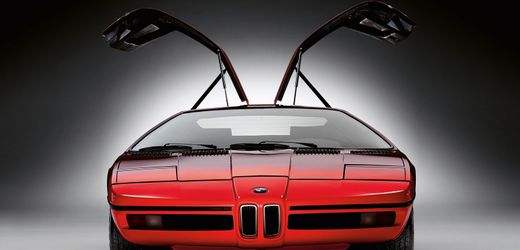
The early summer of 1972 – Germany and especially Munich are eagerly awaiting the summer Olympic games. Car manufacturer BMW wants to use the attention of the world. The company has survived the financial turmoil of the sixties and demonstrates again the Confidence. So, a concept vehicle designed at the Olympic games for the car enthusiasm of the BMW Turbo are created.
BMW voice at the time of a “rolling laboratory” and applied to the study of the car a bit of wood as a “safety sport”. For the sporty Part of a turbo engine, was responsible, in the security section, there were several innovations.
The actual Name of the concept car was short and businesslike BMW Turbo. He pointed to the Essential point: the exhaust gas turbocharger. The engine the engine power up to 280 HP. A clear message – the most powerful version of the Porsche 911 came to 190 HP. Already in 1973, the model of the BMW 2002 turbo version (internal abbreviation E20) – the first European production car with turbo engine (170 HP) and followed the concept. Unfortunately, the Timing was disastrous, the first oil crisis prepared the fuel-thirsty car came to an abrupt end. Only 1672 examples were built. The way the turbo technology was not yet prepared. Porsche (1975), as well as BMW (from 1977), and almost all the other manufacturers built and build such supercharged engines.
“Safety locking device” – a precursor to the ABS
For the Ur-Turbo from BMW, the spectacular study of the 1972 Olympics, was provided for a series production never. Rather, it should be “components of this research object is cars running in the series production of feed,” as it was called in a former BMW communication. Most of these innovations should improve the security. So there were the four internally ventilated disc brakes on the flat’s device is a “block protection” of the company Teldix, which belonged to the half of the Bosch. The technique can be regarded as a precursor of the anti-lock braking system ABS, the Bosch later developed, and Mercedes in 1978 brought in the S-class for the first time in the series.
Also, a further technology of the BMW Turbo was ahead of its time, it bore the name “Radar distance warning device”. Behind it is a System that monitored the distance to the vehicle in front by Radar and tailgating automatically the gas supply is throttled hid. So-called adaptive cruise control found, however, was only a good thirty years, its way into production cars.
Also bumper is made of plastic elements, the ausbeulten after minor collisions were on the BMW Turbo – so due to the elasticity of the material in its original Form returned. The bumpers were completely integrated in the body, which at that time was an exception. In the interior the driver-oriented dashboard, the shapes still today, BMW interior debuted.
Style-forming for almost fifty years
So much of this finesse later BMW models, or even the car world as a whole had made its debut in 1972, the biggest hit was the optics. The former BMW head designer Paul Bracq was of the line obviously, from the 1969 presented Mercedes C 111 (driven by a Wankel rotary engine) to inspire, as well as numerous wedge-shape-classics of the Italian design houses Bertone and Pininfarina.
The BMW also impressed with the enormous Gullwing doors. Unfortunately, the six years were missing later, when BMW super sports car, the M1, which emerged from the study. Other Details were taken almost unchanged: for example, the tapered front end with the pop-up headlights or the two BMW emblems on the rear. Until BMW sent starting in 2014 the i8 on the roads, the M1, the only real series-production super sports car the Munich-based brand.
The BMW Turbo is one of the most important and influential Concept cars ever. Because of the hybrid racer i8, is regarded as a descendant of the safety of sports car – recognizable, among other things, to the gull-wing doors. And even the 2019 study Vision M Next takes up the style elements of the Ur-Turbos: in the Form of the two BMW Logos at the rear. From the BMW Turbo two copies were made. Today, both are in the BMW Museum in Munich. You will still be awarded regularly to museums, as well as for Film and photo productions.


